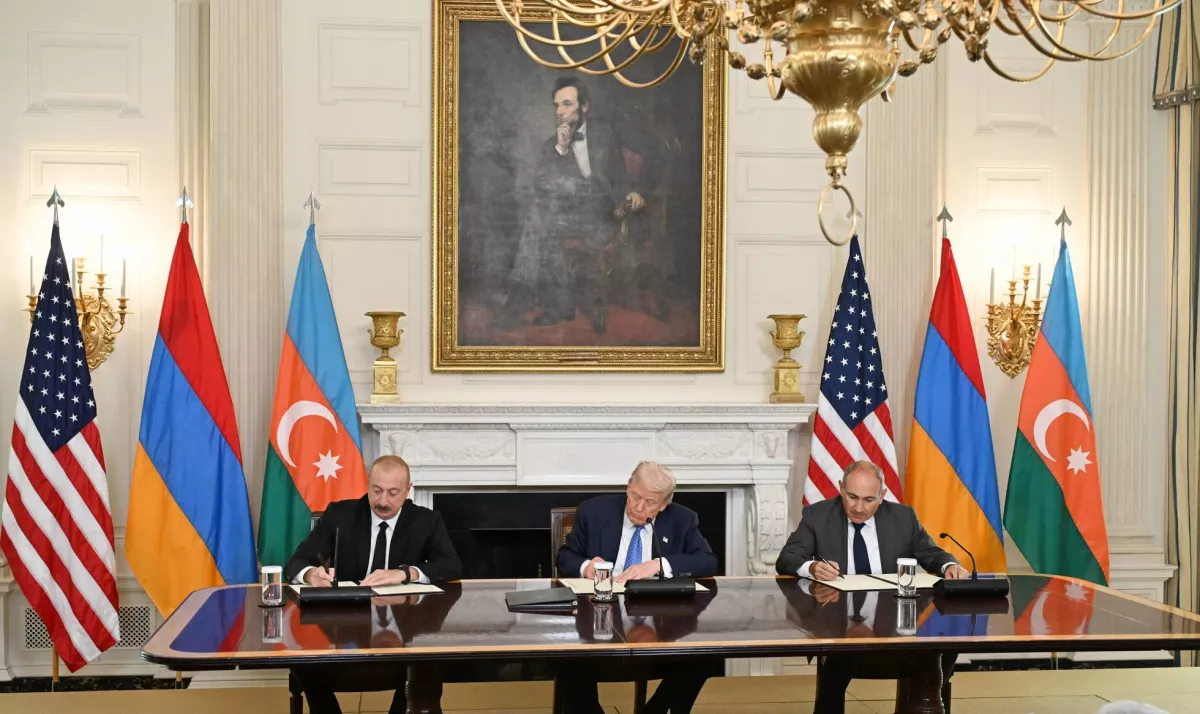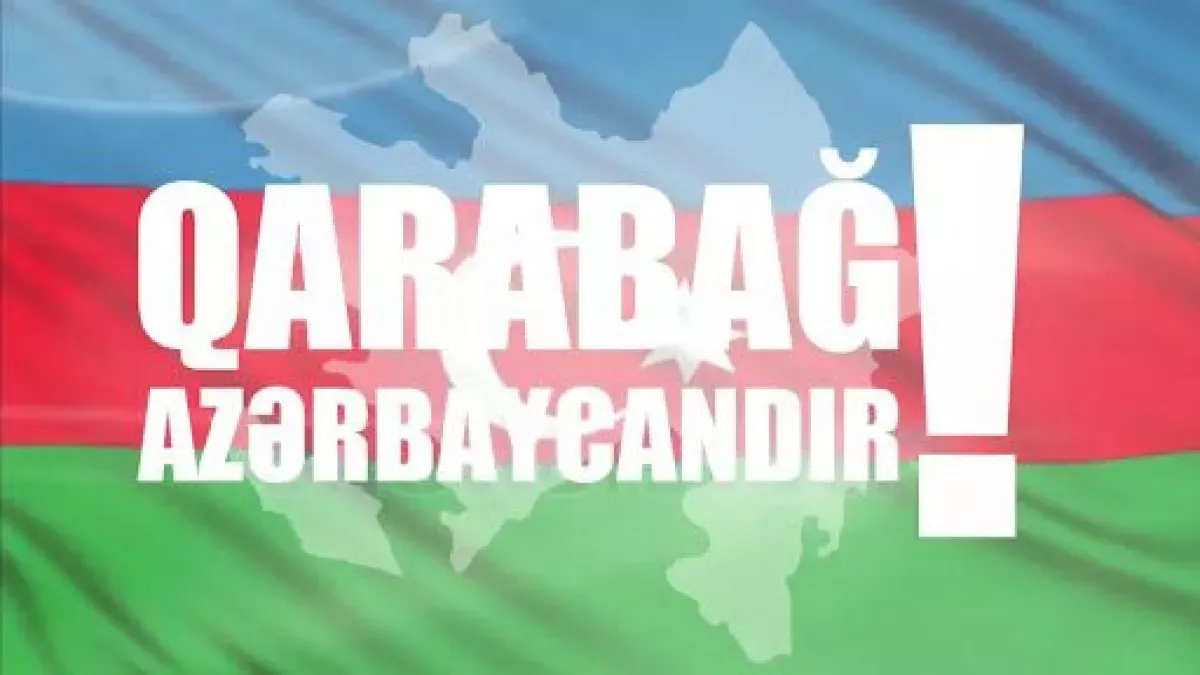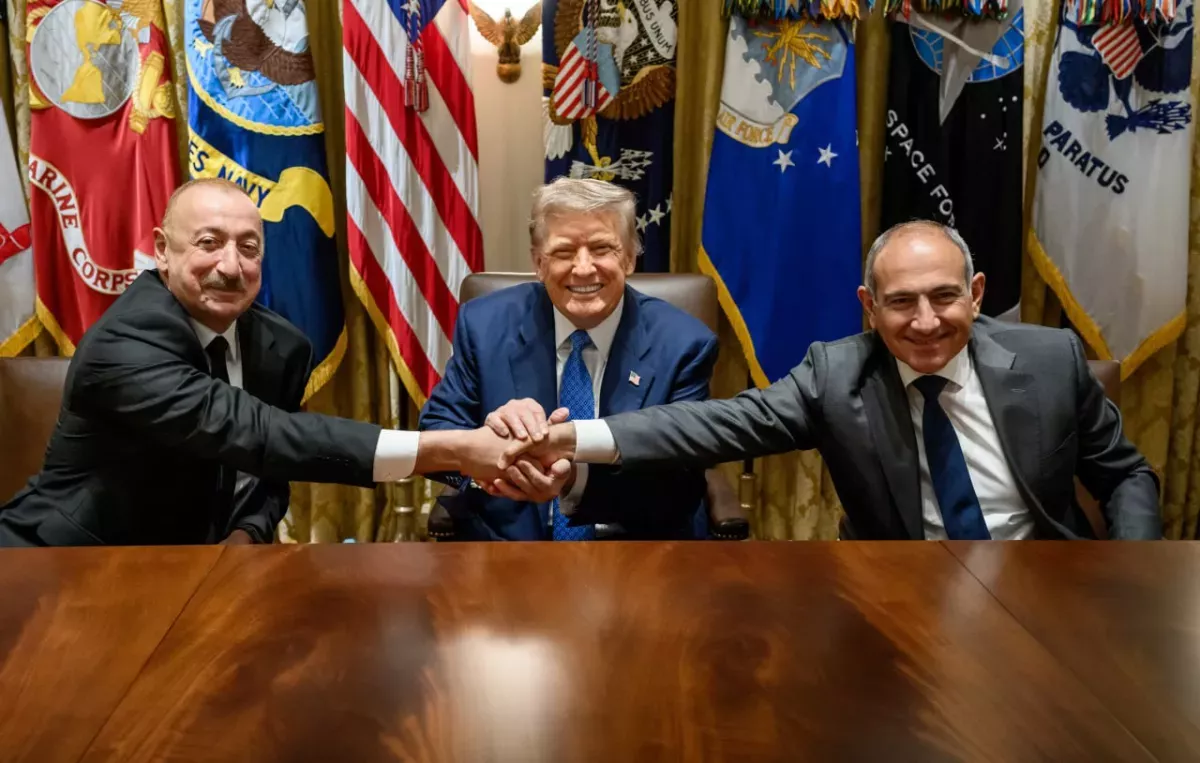Trump Route: Road transforming Caucasus’ destiny BESA Centre analysis
The Begin-Sadat Center for Strategic Studies (BESA) has published an article by Israeli political scientist Vladimir (Ze’ev) Khanin analysing the evolving balance of power in the South Caucasus. Caliber.Az offers an excerpt from this study.
"On August 8, 2025, U.S. President Donald Trump welcomed Azerbaijani President Ilham Aliyev and Armenian Prime Minister Nikol Pashinyan to the White House, where the two leaders signed a joint declaration on peace, ending nearly four decades of bitter conflict between the two post-Soviet states in the South Caucasus.
The declaration, which still requires approval by the parliaments of both countries, not only ended the state of war between them and opened up travel, business, and diplomatic relations, but also paved the way for bilateral economic agreements—signed at the same meeting between each country and the U.S. — in the fields of trade, transit, energy, infrastructure, and technology.

The key element of this agreement appears to be the U.S. intention to help build a major transit corridor, to be named the Trump Route for International Peace and Prosperity (TRIPP).
Today thus marks a return to an issue first raised on the eve of the Soviet Union’s collapse but frozen for many years, remaining a stumbling block to resolving the smoldering and repeatedly escalating conflict in the South Caucasus. Both of its key dimensions—political and ethnic (or ethno-confessional) — have largely been tied to the so-called Zangezur corridor, a 40-kilometre extraterritorial transport artery running through Armenian territory and linking Azerbaijan with its exclave of Nakhchivan, which borders Türkiye.
Post-imperial Mosaic
The problem of ethnic and religious diversity in the South Caucasus is by no means new. It is a legacy of two empires: Russia, which annexed the region during a series of Russo-Iranian and Russo-Turkish wars in the first half of the 19th century, and the Soviet empire that replaced it. In 1921, the South Caucasus was incorporated de facto into the Soviet sphere, and with the formation of the USSR in 1924, Armenia, Azerbaijan, and Georgia—states that had existed independently for just over three years (1918–1921) — were officially absorbed.
On February 20, 1988, the regional council of the NKAO formally appealed to the Supreme Councils of the USSR, the Azerbaijan SSR, and the Armenian SSR demanding to transfer the oblast to Armenia.
One of the bloodiest episodes of this conflict was the Khojaly massacre, which, even more than 30 years later, remains an unhealed wound for the Azerbaijani people. At the time, more than 600 people were killed in this act of ethnic cleansing, most of them civilians. In many cases, the killings were accompanied by abuse and desecration of the victims’ bodies, as documented by numerous Western media outlets and human rights organizations.

In May 1994, Armenia and Azerbaijan signed a ceasefire agreement that formalized the situation established during the war, which then remained largely unchanged for more than a quarter of a century.
After numerous attempts to resolve the conflict diplomatically failed to produce meaningful results, full-scale military operations resumed in September 2020, this time resulting in a decisive victory for Baku.
It quickly became clear that the trilateral ceasefire agreement signed by Russia, Armenia, and Azerbaijan had only temporarily stabilised the situation. The final blow came at the end of September 2023, when renewed fighting in Karabakh led to the dissolution of the unrecognised republic, the disbanding of its army, and the withdrawal of Armenian armed forces from the region.
The Zangezur Corridor
At first glance, with the disappearance of its primary point of contention, the Azerbaijani-Armenian conflict might — or even should — have ended there. However, the situation proved to be more complex. Immediately after the cessation of hostilities in September 2023, Azerbaijan began negotiations with Armenian representatives in Nagorno-Karabakh on the reintegration of the region within Azerbaijan’s internationally recognized borders. Armenians were guaranteed the rights to preserve, use, and develop the Armenian language and culture, to practice freedom of religion, and to ensure the protection of cultural and religious monuments. Nevertheless, nearly the entire Armenian population in region chose to evacuate to Armenia.

This is compounded by the foreign policy vacillations of the Armenian leadership. On one hand, there is irritation—both within the leadership and across society—at the actions, or rather the inaction, of their ally, Russia.
Preoccupied with the war in Ukraine, Russia did not provide Yerevan with the support it expected. Meanwhile, Russian peacekeepers along the line of contact in Karabakh chose not to intervene. In this context, the course of action pursued by Nikol Pashinyan’s government — seeking rapprochement with the West as an alternative to reliance on Russia—seems quite logical.
However, despite promising statements and isolated steps taken by Washington and Brussels, Yerevan remained uncertain for quite some time about the seriousness of its Western partners’ intentions. In particular, France, which has traditionally sympathized with Armenia, pursued its own agenda. Paris was also concerned about the growing geopolitical activity of Türkiye.
One potential way out of this, let us call it, “persistently unstable situation,” could be a compromise on an issue of critical economic and geostrategic importance to most of the major political players in the South Caucasus. In fact, such an issue was the creation of the “Zangezur corridor” mentioned at the beginning of this article.
Azerbaijan and Türkiye pushed for the creation of such a corridor, while Armenia opposed the plan. If implemented, Armenia would lose its border with Iran, while Azerbaijan would gain a land route to Türkiye, transforming it into a major hub for transporting its own and Central Asian hydrocarbons and other goods to Europe, bypassing Iran, which perceives the corridor as a potential threat to its influence in the region. Russia’s position on the issue was initially, to say the least, ambiguous.

The situation changed with the start of U.S. President Donald Trump’s second term, when he returned to the White House with ideas for ending regional conflicts he considered “unnecessary” for America. Among other initiatives, he decided — and, as events have shown, quite successfully so far — to address the conflict in the South Caucasus.
Trump apparently believed, not without reason, that the current balance of power in the region is closely linked to the broader Middle East confrontation between the United States’ strategic ally, Israel, and its partners, and the “axis of evil” led by Tehran.
While Iran remains unequivocally opposed to this U.S.-led initiative, which alters the balance of power in the South Caucasus, Russia has so far been very cautious in its public statements.
This is hardly surprising: Russia is currently heavily dependent on its relationship with Türkiye, particularly in areas such as trade and energy diversification, according to Israeli and Kazakhstani foreign policy expert Andrei Kazantsev-Vaisman. “… Moscow’s focus on the conflict in Ukraine, its influence in the post-Soviet space, especially in the South Caucasus and Central Asia, has weakened considerably. It is therefore unlikely that Moscow will confront Türkiye, especially over the Armenian issue, where Russia has already lost much of its former influence after the Second Karabakh War.”
Within this framework, the issue of the Zangezur corridor shifts from being a problem to becoming a key element of its solution.
By Aghakazim Guliyev








